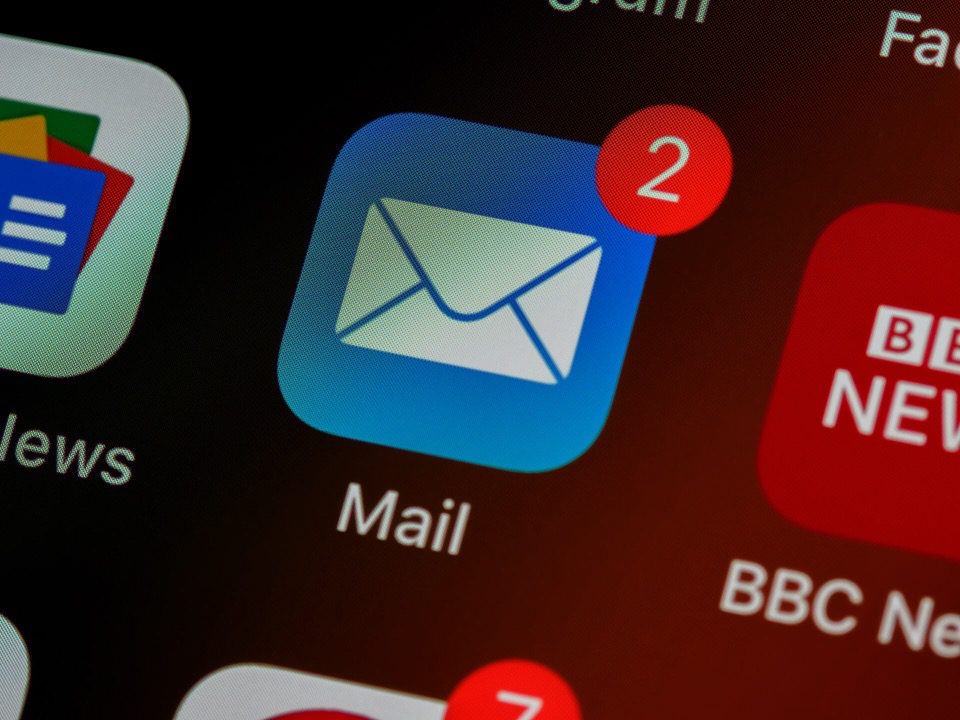
As someone who has likely sent or received countless emails in both personal and professional settings, you know that not all are created equal. Some stand out, even when about a topic we are not particularly interested in.
What made you click open? You may credit a clickbait headline or pass it off as a fluke, but experienced marketers know that is hardly ever the case — the “secret” is that these emails have been continuously tested and improved based on key email marketing metrics.
Thankfully, anybody can learn how to identify areas for improvement and optimize their emails to achieve better results. All you need is a good understanding of what email metrics are important to track and measure.
Here’s what our email marketing experts recommend, with some practical tips for your next campaign.
Table of Contents
First and Foremost: Establish a Baseline
Before we dive in, it would be remiss if we did not emphasize the importance of setting a reference point prior to measuring and improving your email campaigns. For instance, the average open rate for email is only 21.5%.
This ensures accurate measurement of your efforts by comparing how your campaigns are performing relative to previous efforts. It also helps you identify performance trends and patterns and whether you are progressing towards your goals.
In the same breath, be mindful to set reasonable goals. Unrealistic ones can lead to misguided decision-making in an effort to achieve your targets quickly.
For instance, focusing purely on short-term gains may cause you to neglect other important aspects, such as maintaining a consistent brand voice, delivering valuable content to your subscribers, and nurturing long-term relationships with them.
Long-term success requires measured and consistent commitment to improving all of your most important email marketing metrics.
Now, let’s get into it.
1. Open Rates

Email open rate is a very important metric to measure the success of your email marketing campaign. However, please be aware that after the Apple Privacy update, open rate overstatements have been observed in accounts where Apple users are the majority. In order to get more accurate open rates, different methods must be used. It is still a great indicator of your deliverability.
Your email marketing software should calculate it for you, but here’s the formula:
No. of emails opened / No. of emails delivered X 100
Factors that influence your email open rate include:
- The quality of your subject line and preheader
- The time and day of the week you send your email
- The frequency of your emails
A/B testing is an effective way to find out what subject lines, preheaders, and send times perform best among your audience. Companies that A/B test tend to see a 37% higher ROI than those that don’t test. Try segmenting your email list and sending targeted and relevant content to specific groups to get more accurate data.
The worldwide open rate for marketing emails is 18%, so don’t be discouraged by low figures. Another important thing to note is that your open rates may not accurately reflect the effectiveness of your campaign because of several reasons:
- Image blocking: An email is only counted as “opened” if the recipient also receives the images. Many people block images by default, so your open rates may be lower than the actual numbers. Also, keep in mind that bot opens from the Apple Privacy update can inflate this number since images would be preloaded.
- The preview text: Some subscribers view a preview text snippet in addition to the subject line, which can influence them to open your email or not. A weak preview text may lead to low open rates despite a captivating subject line.
- The preview pane: Many email apps display the email content in a preview pane. In this case, your email was technically opened but the subscriber may not have read the entire email.
While these factors are to be considered, open rates are still some of the most important email marketing metrics when used in conjunction with other data.
2. Click-Through Rate (CTR)

High CTRs indicate that your email content is resonating with your subscribers and motivating them to take action, whether that’s visiting your website, reading an article, or making a purchase.
Low CTRs, on the other hand, suggest your email content needs improvement.
If you’re struggling with a low CTR, consider the clarity and placement of your calls-to-action (CTAs), the relevance and value of your content to your target audience, or even your emails’ overall design and layout.
Here are some key tips:
- Use clear, action-oriented language in your CTAs that clearly communicates what subscribers can expect after clicking through.
- Ensure your CTAs are prominently placed and easy to locate within your email.
- Personalize your email content to make it more relevant and valuable to your subscribers.
- Use a clear and concise subject line that accurately reflects the content of your email.
Like with most important email metrics to track, test different email variations whenever you make any of the changes above to see what resonates most with your subscribers.
3. Conversion Rates
Ultimately, the goal of any email campaign is to drive a desired action, so it goes without saying that this is one of the most important email marketing metrics to measure.
Whether it’s making a purchase, filling out a form, or downloading a resource, a high or low conversion rate is a good indicator of the effectiveness of your email content.
You must track how many recipients took the desired action after clicking through from your email to measure this metric.
For example, if your goal is to drive sales, track how many subscribers made a purchase on your website after clicking the links in your email. Divide this number by the total clicks on your email’s CTA, and then multiply by 100 to get a percentage.
There are various strategies to improve your conversion rate such as clear and compelling CTAs and personalizing your email content. However, nothing beats providing value and benefits that your audience can’t resist, so make sure your email content speaks directly to their needs and pain points.
4. Cost Per Conversion
Converting leads may be a positive outcome of email marketing campaigns, but does it align with your marketing budget?
This is where the cost per acquisition (CPA) comes into play.
This metric takes into account the total cost of running the campaign, including email marketing software, content creation, design, and any additional costs, and divides it by the number of conversions generated.
If you spend $1,000 on an email campaign that generates 50 conversions, the CPA is $20 ($1,000 / 50 conversions = $20). This means that it cost you $20 to acquire each conversion through the campaign.
Knowing the exact cost of acquiring a customer helps marketers make data-driven decisions on how to spend their resources. Additionally, it is a great way of gauging whether a company is meeting business goals, as the CPA can be compared against internal targets set against company budgets and industry benchmarks.
5. Bounce Rate

Emails bounce for a variety of reasons, including invalid or inactive email addresses, full mailboxes, or even email filters that flag your message as spam. This is a key email marketing metric to measure as it tells you whether you need to improve the quality of your email list for effective campaigns.
Here are some tips to help you reduce your email bounce rate:
- Clean your email list regularly and remove any email addresses that are no longer active or have bounced in the past.
- Segment your email list based on factors like location, interests, and past behavior, so you can tailor your messaging to specific groups of subscribers.
- Avoid sending emails too frequently as it could overwhelm subscribers and make them mark your messages as spam.
- Use a reputable email service provider that can also provide you with tools to manage your email list and segment your subscribers.
- Avoid spam trigger words “free,” “buy now,” and “limited time offer” in your email content.
- Get your audience’s permission to send them emails.
If you think your email bounce rate is not an important email metric to measure, consider that high rates can negatively impact your sender reputation on domain addresses such as Gmail, Yahoo!, or Hotmail.
6. Unsubscribe Rate
It’s downright demoralizing when people unsubscribe after you send out an email you’ve worked hard on, but the silver lining is that it’s a powerful ‘review’ of your campaign.
Unsubscribe rates provide insights into the effectiveness of your email content, frequency, or targeting. The person could have unsubscribed because they have been receiving irrelevant or low-quality content, too many emails, or they are just not interested in your products or services. This is why it is one of the most important email marketing metrics to track.
To reduce your unsubscribe rate, consider the following tips:
- Offer opt-down options: Instead of unsubscribing altogether, some subscribers may prefer to receive fewer emails or different types of content.
- Set expectations for email frequency: Be transparent about how often you will be sending emails to your subscribers and stick to your schedule.
- Provide valuable content: Ensure that your email content is relevant, informative, and valuable to your subscribers. Remember to segment your lists for better targeting.
- Make it easy to unsubscribe: Include a visible and straightforward unsubscribe link in your emails.
7. Return on Investment (ROI)
This is similar to cost per conversion, only it measures the financial return generated by an email campaign relative to its cost.
Calculating the ROI of your email campaigns determines whether your email marketing is generating a profit or a loss, and is influenced ROI by all factors such as the quality of your email list, the relevance and effectiveness of your email content, and the targeting and segmentation of your email campaigns. Basically, all the most important email marketing metrics mentioned above.
At the end of the day, even the most well-thought-out email campaigns are ineffective if they do not have a satisfactory ROI for your business.
Let’s Help You Optimize for Success
If you’re looking to improve your email marketing campaigns and see real results, the experts at Coalition Technologies specialize in helping businesses achieve their email marketing goals through data-driven strategies and techniques.
Check out how we increased email open rates by 101% and click-through rates by 90% for Pompeii3, an ecommerce brand in the jewelry industry.
Get in touch with us to learn more about how we can boost your bottom line.


